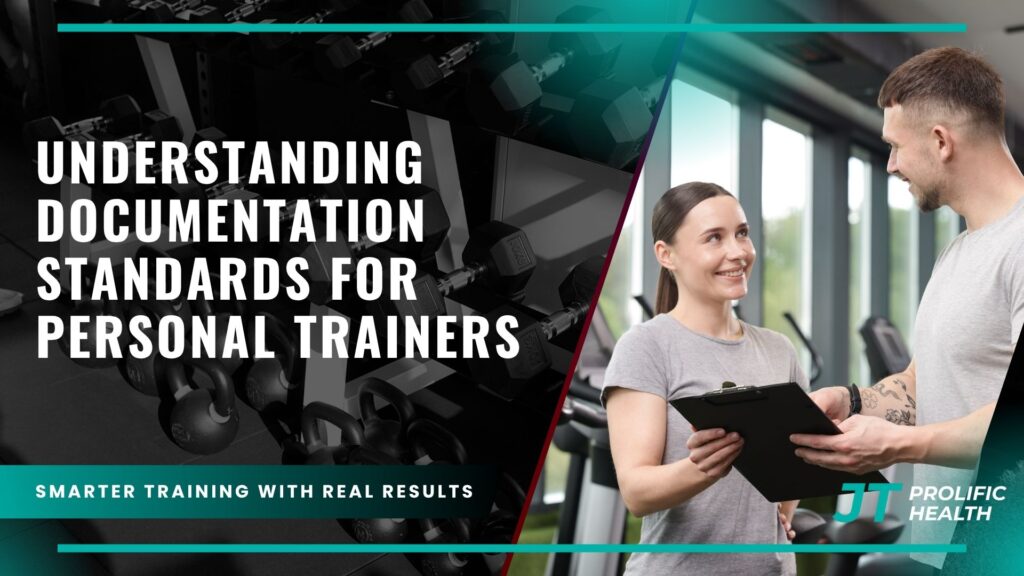Professional documentation standards form the backbone of successful personal training practices, ensuring client safety, legal protection, and measurable progress tracking. In today’s fitness industry, personal trainers must navigate an increasingly complex landscape of regulations, liability concerns, and client expectations while maintaining detailed records that support their professional credibility and business growth.
The importance of proper documentation extends far beyond simple record-keeping. It encompasses comprehensive client assessments, detailed workout logs, progress tracking, incident reporting, and ongoing communication records that collectively demonstrate a trainer’s commitment to professional excellence. These standards protect both trainers and clients while establishing clear protocols for accountability and continuous improvement.
Modern personal training documentation has evolved from basic paper forms to sophisticated digital systems that integrate multiple aspects of client management. This transformation reflects the growing professionalization of the fitness industry and the recognition that thorough documentation directly correlates with better client outcomes and reduced liability exposure.
Understanding and implementing proper documentation standards requires knowledge of legal requirements, industry best practices, and practical systems that can be maintained consistently throughout a trainer’s career. The complexity of these requirements often varies by location, certification body, and employment setting, making it essential for trainers to stay informed about current standards and emerging trends.
For personal trainers operating in competitive markets like Vancouver and Richmond, maintaining exemplary documentation standards can differentiate their services and build trust with clients who increasingly value transparency and professionalism. These standards also support business growth by providing the data needed to demonstrate effectiveness and justify premium pricing structures.
Key Takeaways
For additional context, see this comprehensive guide.
- Legal Protection: Comprehensive documentation serves as crucial legal protection for personal trainers, providing evidence of proper procedures, informed consent, and professional conduct in case of disputes or liability claims.
- Client Safety: Detailed health screenings, medical clearances, and ongoing assessment records ensure trainers can identify potential risks and modify programs appropriately to prevent injuries.
- Progress Tracking: Systematic documentation of workouts, measurements, and assessments enables trainers to demonstrate client progress objectively and adjust programs based on data rather than assumptions.
- Professional Credibility: Well-maintained records showcase a trainer’s professionalism and attention to detail, building client confidence and supporting business growth through referrals and testimonials.
- Regulatory Compliance: Proper documentation ensures compliance with certification body requirements, insurance policies, and local regulations that govern personal training practices.
- Communication Enhancement: Documented session notes and client communications create continuity and enable better service delivery, especially in team environments or when covering for other trainers.
- Business Intelligence: Comprehensive records provide valuable data for analyzing client retention, program effectiveness, and business performance metrics that inform strategic decisions.
- Continuity of Care: Detailed documentation enables seamless transitions when clients work with multiple trainers or when trainers need to refer clients to other professionals.
Overview of Documentation Standards in Personal Training


For additional context, see detailed information on this topic.
Documentation standards in personal training encompass a comprehensive framework of record-keeping practices designed to ensure client safety, legal compliance, and professional accountability. These standards have evolved significantly over the past decade, driven by increased liability awareness, technological advances, and the growing recognition of personal training as a healthcare-adjacent profession.
The foundation of effective documentation lies in understanding the multiple purposes it serves. Beyond the obvious benefits of tracking client progress and maintaining professional records, proper documentation supports evidence-based practice, facilitates communication with healthcare providers, and provides the data necessary for continuous improvement of training methodologies.
Modern documentation standards typically include pre-participation screening forms, health history questionnaires, fitness assessments, goal-setting documentation, workout logs, progress measurements, incident reports, and ongoing communication records. Each component serves specific purposes and must be maintained according to established protocols that balance thoroughness with practical implementation.
The digital transformation of documentation has introduced new opportunities and challenges for personal trainers. While electronic systems offer improved organization, backup capabilities, and data analysis tools, they also require attention to cybersecurity, data privacy regulations, and system reliability considerations that weren’t relevant in purely paper-based systems.
Essential Components of Trainer Documentation


The cornerstone of professional personal training documentation begins with comprehensive client intake procedures that establish the foundation for all future interactions. This initial documentation phase includes detailed health history questionnaires, medical clearance requirements, liability waivers, and informed consent forms that protect both parties while ensuring transparent communication about expectations and limitations.
Health screening documentation represents perhaps the most critical component of trainer records, as it directly impacts client safety and liability exposure. This includes PAR-Q+ forms, medical history documentation, current medication lists, previous injury records, and any restrictions or modifications recommended by healthcare providers. Trainers must understand when to require medical clearance and how to document these requirements properly.
Fitness assessment documentation provides the baseline data necessary for program design and progress tracking. This encompasses initial measurements, strength assessments, cardiovascular evaluations, flexibility testing, and movement screenings. The key lies in selecting appropriate assessment protocols and documenting results in standardized formats that enable meaningful comparison over time.
Program design documentation includes detailed workout plans, progression strategies, exercise modifications, and the rationale behind programming decisions. This documentation demonstrates professional competence and provides the framework for consistent program delivery, especially important when multiple trainers work with the same client or when reviewing program effectiveness.
Session documentation captures the details of each training encounter, including exercises performed, weights used, repetitions completed, client feedback, observations about form or motivation, and any modifications made during the session. This real-time documentation enables precise program adjustments and provides valuable insights into client progress patterns.
When considering the optimal timing for professional guidance, proper documentation becomes even more crucial as it helps establish clear baselines and track improvement from the very beginning of a client’s fitness journey.
Legal and Compliance Requirements


Understanding the legal landscape surrounding personal training documentation requires awareness of multiple regulatory frameworks that vary by jurisdiction, certification body, and employment setting. Personal trainers must navigate federal privacy laws, provincial regulations, professional liability requirements, and industry-specific standards that collectively define minimum documentation requirements and best practices.
Privacy legislation, such as the Personal Information Protection and Electronic Documents Act (PIPEDA) in Canada, establishes strict requirements for collecting, storing, and sharing personal health information. Trainers must implement appropriate safeguards for both physical and electronic records, obtain proper consent for information use, and understand their obligations regarding data breach notification and client access rights.
Professional liability considerations drive many documentation requirements, as detailed records provide crucial evidence in the event of injury claims or professional misconduct allegations. Insurance providers often specify minimum documentation standards as conditions of coverage, including requirements for incident reporting, medical clearances, and ongoing assessment documentation.
Certification body requirements add another layer of compliance obligations, with organizations like ACSM, NASM, and CSEP establishing specific documentation standards for their certified professionals. These requirements often include continuing education documentation, scope of practice limitations, and professional development tracking that must be maintained throughout a trainer’s career.
Employment settings introduce additional compliance considerations, with commercial gyms, healthcare facilities, and independent practices each having unique documentation requirements. Understanding these variations helps trainers adapt their documentation practices to meet specific workplace standards while maintaining consistency with professional requirements.
The intersection of healthcare and fitness creates particular documentation challenges, especially when trainers work with clients who have medical conditions or are referred by healthcare providers. These situations require enhanced documentation protocols and clear communication channels that respect professional boundaries while ensuring continuity of care.
Digital Documentation Systems and Best Practices
The transition from paper-based to digital documentation systems has revolutionized personal training record-keeping, offering unprecedented opportunities for organization, analysis, and accessibility while introducing new challenges related to technology adoption, data security, and system integration. Modern trainers must evaluate various digital platforms and develop implementation strategies that enhance rather than complicate their documentation processes.
Cloud-based documentation platforms provide the foundation for modern trainer record-keeping, offering automatic backups, multi-device access, and collaborative features that support team-based training environments. However, selecting appropriate platforms requires careful consideration of security features, compliance capabilities, user interface design, and integration possibilities with existing business systems.
Mobile documentation capabilities have become essential for trainers who work in multiple locations or provide outdoor training services. Smartphone and tablet applications enable real-time data entry, photo documentation, and client communication while maintaining synchronization with primary documentation systems. The key lies in selecting tools that function reliably in various environments and maintain data integrity across platforms.
Data analytics capabilities represent one of the most significant advantages of digital documentation systems, enabling trainers to identify patterns, track long-term trends, and make data-driven decisions about program modifications. Advanced platforms can generate automated reports, highlight concerning trends, and provide insights that would be difficult to identify through manual record review.
Security considerations become paramount when implementing digital documentation systems, requiring attention to encryption, access controls, backup procedures, and incident response protocols. Trainers must understand their responsibilities for protecting client data and implement appropriate technical and administrative safeguards that meet or exceed regulatory requirements.
Integration capabilities allow documentation systems to connect with other business tools, including scheduling software, payment processing systems, and communication platforms. This integration reduces administrative burden and ensures consistency across all client interactions while maintaining comprehensive records of the entire client relationship.
Understanding effective progress tracking methods becomes much more sophisticated when supported by robust digital documentation systems that can analyze trends and generate meaningful insights.
Quality Assurance and Documentation Review
Implementing effective quality assurance processes ensures that documentation standards remain consistently high and continue to meet evolving professional requirements. Regular review and audit procedures help identify gaps, inconsistencies, and improvement opportunities while demonstrating commitment to professional excellence and continuous improvement.
Systematic review protocols should examine documentation completeness, accuracy, timeliness, and compliance with established standards. This includes checking for missing forms, incomplete assessments, delayed entries, and adherence to privacy requirements. Regular audits help identify patterns that may indicate training needs or system improvements.
Peer review processes can provide valuable feedback on documentation quality and identify best practices that can be shared across training teams. Collaborative review sessions also help ensure consistency in documentation approaches and interpretation of standards, particularly important in larger fitness facilities with multiple trainers.
Client feedback mechanisms provide important insights into the effectiveness of documentation processes from the user perspective. Regular surveys or informal discussions can reveal areas where documentation requirements may be creating barriers to client satisfaction or where additional explanation might improve compliance and understanding.
Continuous improvement protocols should incorporate lessons learned from quality assurance activities, industry updates, and emerging best practices. This includes regular updates to documentation templates, training materials, and standard operating procedures that reflect current knowledge and regulatory requirements.
Performance metrics related to documentation quality can include completion rates, accuracy measures, compliance scores, and client satisfaction indicators. Tracking these metrics over time provides objective evidence of improvement efforts and helps justify investments in training, technology, or process improvements.
For trainers working with clients who are just beginning their fitness journey, understanding proper preparation procedures becomes crucial for establishing comprehensive documentation from the very first session.
Prolific Health’s Approach to Documentation Excellence
At Prolific Health, documentation standards represent a cornerstone of our commitment to professional excellence and client safety. Our comprehensive approach integrates industry best practices with innovative technology solutions to create a documentation framework that supports superior client outcomes while ensuring full compliance with regulatory requirements and professional standards.
Our documentation protocols begin with thorough client intake procedures that establish clear baselines for health status, fitness levels, and personal goals. We utilize standardized assessment tools combined with personalized evaluation methods that capture the complete picture of each client’s starting point and ongoing progress. This foundation enables our trainers to design truly individualized programs while maintaining detailed records that support accountability and continuous improvement.
The integration of digital documentation systems at Prolific Health enables real-time tracking, comprehensive analysis, and seamless communication between trainers and clients. Our platform provides secure access to workout logs, progress measurements, and goal tracking while maintaining the highest standards of data privacy and security. This technology-enhanced approach allows our trainers to focus on client interaction while ensuring that all documentation requirements are met efficiently and accurately.
Quality assurance remains a priority throughout our documentation processes, with regular reviews, peer feedback, and continuous improvement initiatives that keep our standards aligned with evolving industry requirements. Our trainers receive ongoing education about documentation best practices and have access to support resources that help them maintain exemplary records while delivering exceptional client service.
The relationship between proper documentation and effective training becomes evident when considering optimal training frequency decisions, which rely heavily on accurate progress tracking and objective assessment data to determine the most beneficial scheduling approaches.
Frequently Asked Questions
What are the minimum documentation requirements for personal trainers?
Minimum documentation requirements typically include health screening forms, liability waivers, fitness assessments, workout logs, and incident reports. Specific requirements vary by certification body, employment setting, and local regulations, but these core components form the foundation of professional documentation standards.
How long should personal trainers keep client documentation?
Most professional guidelines recommend maintaining client records for at least seven years after the last contact, though some jurisdictions may require longer retention periods. Digital storage makes long-term retention more practical while ensuring compliance with various legal and professional requirements.
What information requires medical clearance before training?
Clients with cardiovascular disease, diabetes, metabolic disorders, orthopedic limitations, or those taking medications that affect exercise response typically require medical clearance. The PAR-Q+ screening tool helps identify when medical consultation is necessary before beginning exercise programs.
How can trainers ensure documentation privacy and security?
Privacy protection requires secure storage systems, access controls, encryption for digital records, and staff training on confidentiality requirements. Trainers should implement both technical and administrative safeguards that comply with applicable privacy legislation and professional standards.
What should be documented during each training session?
Session documentation should include exercises performed, weights and repetitions, client feedback, observations about form or motivation, any modifications made, and plans for the next session. This detailed tracking enables precise program adjustments and demonstrates professional accountability.
How do digital documentation systems compare to paper records?
Digital systems offer advantages including automatic backups, data analysis capabilities, multi-device access, and improved organization. However, they require attention to cybersecurity, system reliability, and staff training. Many trainers find that digital systems ultimately save time while improving documentation quality.
What documentation is needed for special populations?
Special populations often require enhanced documentation including medical clearances, specialized assessment protocols, modified consent forms, and detailed progress tracking. The specific requirements depend on the population served and may include coordination with healthcare providers.
How can documentation support business growth for personal trainers?
Comprehensive documentation demonstrates professionalism, supports client retention through better service delivery, provides data for marketing testimonials, and enables analysis of business performance. Well-maintained records also support premium pricing by showcasing the value and thoroughness of services provided.
Those seeking to understand the scope of professional guidance will find that proper documentation extends beyond exercise programming to include comprehensive lifestyle and wellness tracking.
Conclusion
Professional documentation standards represent far more than administrative requirements; they form the foundation of ethical, effective, and legally compliant personal training practice. The investment in comprehensive documentation systems pays dividends through improved client outcomes, reduced liability exposure, and enhanced professional credibility that supports long-term business success.
The evolution toward digital documentation systems has created unprecedented opportunities for personal trainers to streamline their record-keeping while improving the quality and accessibility of client information. However, success requires careful attention to system selection, implementation, and ongoing maintenance that balances efficiency with security and compliance requirements.
As the personal training industry continues to professionalize, documentation standards will likely become more sophisticated and standardized. Trainers who establish excellent documentation practices early in their careers will be well-positioned to adapt to these changes while maintaining the trust and confidence of their clients.
The commitment to documentation excellence ultimately reflects a broader commitment to professional growth and client service that distinguishes exceptional trainers from those who view record-keeping as merely a necessary burden. For trainers considering the value of professional certification, understanding that comprehensive documentation standards are integral to certified practice helps reinforce the importance of proper credentialing in today’s fitness industry.




